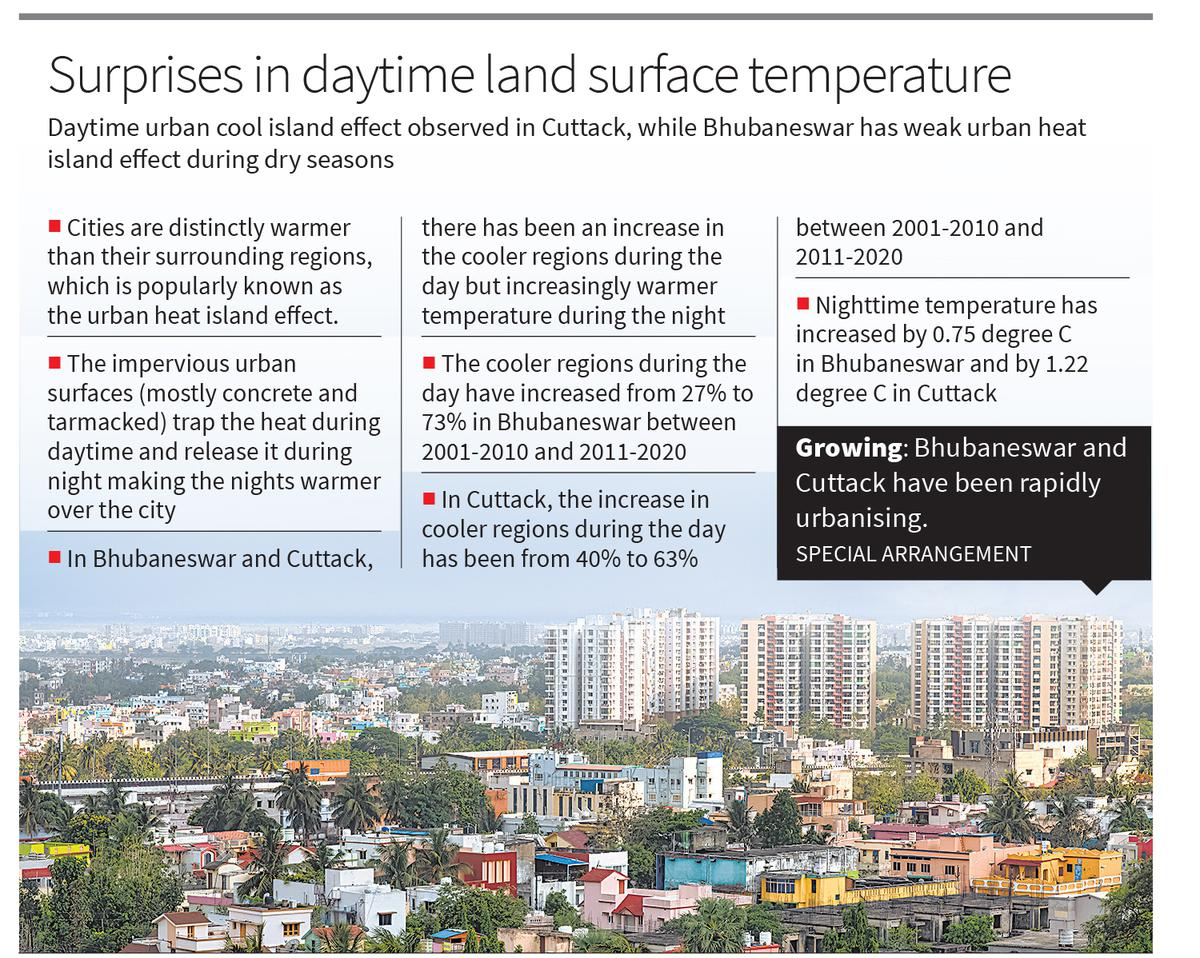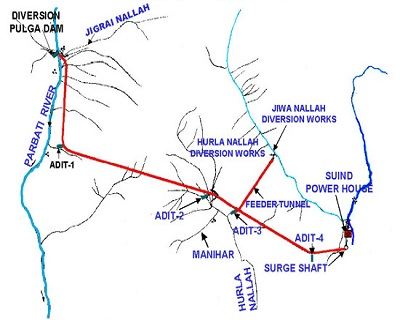Description

Disclaimer: Copyright infringement not intended.
Context: A recent study conducted by researchers from the School of Earth Ocean and Climate Sciences at IIT Bhubaneswar.
Details
- Recent study conducted by researchers from IIT Bhubaneswar highlights the effect of urbanization on land surface temperature.
- Findings published in the journal Environment, Development and Sustainability.
Increased Land Surface Temperature:
- Urbanization has led to increased land surface temperature in Bhubaneswar and Cuttack over the past 20 years.
- Urban areas of Bhubaneswar and Cuttack are approximately 0.75°C and 1.22°C warmer than surrounding rural areas, respectively.
- Core city areas are warmer than recently developed suburban regions.
- Suburban areas in both cities have experienced rapid temperature changes, with suburbs witnessing almost twice the warming compared to the entire city.
Daytime Temperature Changes:
- Increase in relatively cooler regions during daytime in Bhubaneswar and Cuttack.
- Percentage of cooler fractional land cover during daytime has increased from 27% and 40% (2001-2010) to 73% and 63% (2011-2020) in Bhubaneswar and Cuttack, respectively.
- Factors contributing to the decline in daytime land surface temperature require further analysis.
Nighttime Temperature Changes:
- Urban areas exhibit the urban heat island effect during nighttime.
- Bhubaneswar experiences a surface urban heat island intensity (SUHI) of 0.75°C, while Cuttack experiences a SUHI increase of 1.22°C.
- Nighttime land surface temperature has shown a growth rate of 0.18°C and 0.13°C per decade for Bhubaneswar and Cuttack, respectively.
- Urban sprawl in the city's periphery contributes to the largest changes in trend.
Reasons for Temperature Changes:
- Daytime urban cool island observed in Cuttack during winter and pre-monsoon seasons, likely due to unique geographic features.
- Bhubaneswar exhibits weak daytime heat island effect during dry seasons with decreased green cover in surrounding areas.
- Nights are warmer in cities compared to surrounding regions, while daytime warming occurs in both cities and their surroundings.
Expansion of Hotspot Area:
- Increased area with nighttime land surface temperature higher than the 20-year climatological value.
- Bhubaneswar shows a higher expansion in the hotspot area compared to Cuttack due to unconstrained growth.
Implications and Conclusion:
- Urban heat island effect is not restricted to larger cities and affects smaller developing cities as well.
- Proper urban planning can help reduce urban heat island effect and vulnerability to heat in the future.
|
PRACTICE QUESTION
Q) Discuss the impact of urbanization on land surface temperature in Indian cities. Analyze the implications of increased land surface temperature on urban heat island effect and temperature differentials between day and night. (200 words)
|

https://epaper.thehindu.com/ccidist-ws/th/th_delhi/issues/40127/OPS/GGKBCF6TM.1.png?cropFromPage=true
















